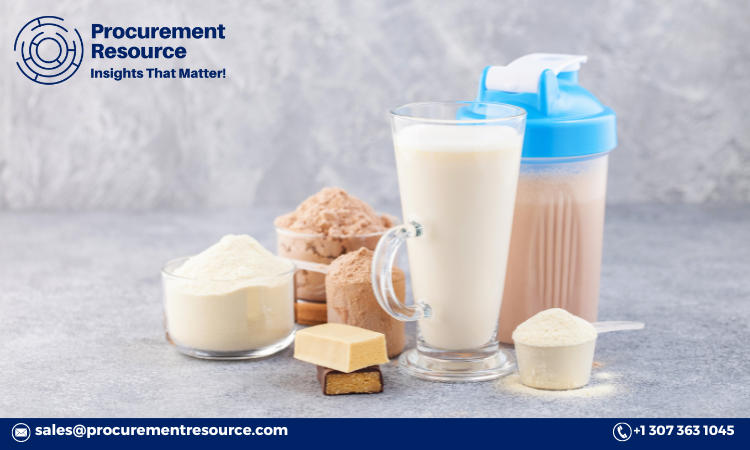
Whey powder, a high-protein product derived from milk, has gained substantial popularity in various industries, particularly in food and beverages, sports nutrition, and pharmaceuticals. The production of whey powder involves several stages, each crucial to ensuring the quality and nutritional value of the final product. Understanding the whey powder production process is essential for producers and consumers alike to appreciate the complexities involved in creating this versatile ingredient.
Whey is the liquid byproduct left after milk has been curdled and strained during cheese production. It is rich in lactose, vitamins, minerals, and whey proteins. The transformation of liquid whey into powdered form involves several steps:
- Collection and Pasteurization: The first step involves collecting liquid whey from cheese production facilities. This whey is then pasteurized to eliminate any harmful bacteria and to ensure the safety of the product.
- Ultrafiltration and Microfiltration: These filtration processes are employed to concentrate the whey by removing water, lactose, and other non-protein components. Ultrafiltration focuses on retaining proteins while removing smaller molecules, whereas microfiltration helps in further refining the product by separating bacteria and fat particles.
- Evaporation: The concentrated whey is subjected to evaporation to remove a significant portion of the remaining water. This step helps in reducing the volume of the liquid whey, making the drying process more efficient.
- Spray Drying: The evaporated whey is then spray-dried to convert it into a powder form. In this process, the liquid whey is sprayed into a hot air chamber, causing the water to evaporate quickly, leaving behind fine whey powder particles.
- Packaging: The final step involves packaging the whey powder in suitable containers to preserve its quality and extend its shelf life. Proper packaging is crucial to prevent moisture absorption and contamination.
Request For Sample: https://www.procurementresource.com/production-cost-report-store/whey-powder/request-sample
Manufacturing Report and Process
Producing whey powder on an industrial scale requires a detailed understanding of the manufacturing process, equipment, and quality control measures. A comprehensive manufacturing report outlines these aspects, ensuring that the production meets industry standards and regulatory requirements.
- Plant Design and Equipment: The design of a whey powder manufacturing plant is critical to the efficiency and quality of production. Key equipment includes pasteurizers, ultrafiltration and microfiltration units, evaporators, spray dryers, and packaging machines. Each piece of equipment must be carefully selected and maintained to ensure optimal performance.
- Quality Control: Ensuring the quality of whey powder is paramount. Quality control measures include regular testing of raw whey for contaminants, monitoring the filtration and evaporation processes, and conducting microbiological tests on the final product. Consistent quality control helps in maintaining the nutritional value and safety of the whey powder.
- Regulatory Compliance: Compliance with local and international regulations is essential for whey powder producers. This includes adhering to food safety standards, labeling requirements, and environmental regulations. Regular audits and inspections help in maintaining compliance and ensuring the product’s marketability.
- Efficiency and Sustainability: Modern whey powder production facilities focus on efficiency and sustainability. This involves optimizing energy use, reducing water consumption, and minimizing waste. Sustainable practices not only benefit the environment but also reduce production costs and improve profitability.
Raw Material Costs
The cost of raw materials plays a significant role in the overall production cost of whey powder. Understanding these costs helps producers manage their budgets and price their products competitively.
- Milk and Whey: The primary raw material for whey powder production is liquid whey, a byproduct of cheese production. The cost of milk, from which cheese and subsequently whey are derived, significantly impacts the price of whey powder. Fluctuations in milk prices due to changes in supply and demand, weather conditions, and feed costs can affect the overall production cost.
- Filtration Materials: Ultrafiltration and microfiltration membranes are crucial for concentrating whey. The cost of these membranes, along with their maintenance and replacement, contributes to the production expenses. Advances in membrane technology can help reduce these costs over time.
- Energy and Utilities: The production process, particularly evaporation and spray drying, requires significant energy input. The cost of electricity, natural gas, and water used in the production process affects the overall cost of whey powder. Efficient energy management and the use of renewable energy sources can help mitigate these expenses.
- Labor and Overhead: Skilled labor is essential for operating the equipment and ensuring quality control. Labor costs, along with overhead expenses such as plant maintenance, administrative costs, and regulatory compliance, contribute to the overall production cost.
Latest News
Keeping abreast of the latest news in the whey powder industry is vital for producers, investors, and consumers. Recent developments can impact production processes, costs, and market dynamics.
- Technological Advancements: Innovations in whey powder production technology, such as improved filtration membranes and energy-efficient drying methods, are continually emerging. These advancements can enhance production efficiency, reduce costs, and improve the quality of the final product.
- Market Trends: The demand for whey powder in various sectors, including sports nutrition and functional foods, is growing. Understanding market trends helps producers align their production strategies with consumer preferences and market demands.
- Regulatory Changes: Changes in food safety regulations, labeling requirements, and trade policies can affect the whey powder industry. Staying informed about these changes ensures that producers remain compliant and competitive in the global market.
- Sustainability Initiatives: The focus on sustainability is increasing across industries, including whey powder production. Initiatives such as reducing carbon footprints, optimizing water usage, and minimizing waste are gaining importance. Producers adopting sustainable practices can improve their market positioning and appeal to environmentally conscious consumers.
Conclusion
Whey powder production is a complex process that requires careful management of raw materials, efficient manufacturing practices, and adherence to quality and regulatory standards. By staying informed about the latest industry developments and focusing on sustainability, producers can ensure the success and profitability of their whey powder production ventures. Understanding the intricacies of the production process, managing costs effectively, and keeping up with market trends are essential for thriving in this dynamic industry.






